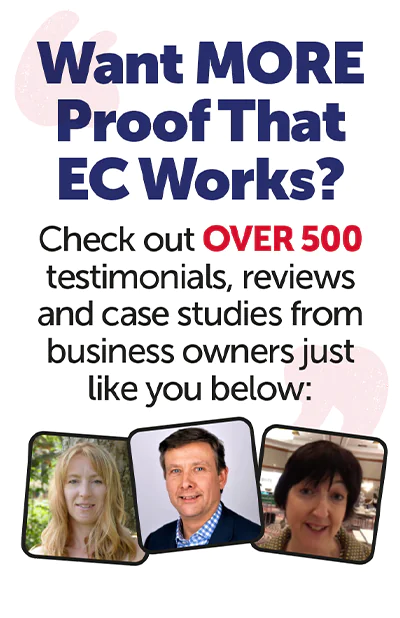RANT: why do so many business owners make this mistake?!
It’s a mistake that is so easy to rectify…
Yet so many businesses are oblivious to it and to be honest, it could be jeopardising their business…
During this video, Nigel gives you the answers.
Can you spot what it is?
Let’s hope you’re not making the same mistake…
Transcript
Hi, it’s Nigel here. And with the leftovers from a paella party. Okay, bear with me here, ’cause there is an important point to this little story. As you can see, I am the proud owner of a surplus of lemons. We ordered too many. But I put em down, you won’t believe how heavy all those lemons are. But, we ordered lemons for a paella party. And we got our quantities wrong, and we ended up with far too many lemons.
There was actually a much bigger surplus than that. My colleagues at ECHQ have snaffled quite a lot of the lemons already. And it’s unusual to have too many lemons, isn’t it? Because normally what happens is, when you want a lemon you haven’t got one. There’s none there. When you really want it, when you’re just preparing that lovely, whether its a G and T, or a nice iced diet coke perhaps, even the craving perhaps to make a lemon meringue, and the lemons are just not there. So it’s quite an unusual situation to be in. To have such a surplus.
Bear with me here, slightly tenuous link, but go with me. Because it occurs to me, it’s a little bit like this when it comes to getting customers. Okay, occasionally, we might have too many, most of the time we haven’t got enough. We’d like more customers coming in. I talked in a previous video about the extremities of the rhythmic acquisition of customers, about my client Tim, who only wants three customers a year, for his yacht renovation business. One end of the spectrum, that’s Tim, the other end of the spectrum is Jas, who requires 160 customers a day for his restaurant in Barnsley. So three a year, 160 a day, and you’re somewhere in the middle. But it’s all well to talk about, well it wouldn’t be great to have this many customers, and certainly understanding what your desired rhythm of rhythmic acquisition is, how many customers do you actually need is one thing. But how do you then make it happen? How do you ensure that your supply of lemons is always spot on and perfect?
Not too many, but always got enough.
And the sensible way to go about it, and the way I tackle it with my private clients, is we sit down and we pull together a single page marketing plan. And the single page marketing plan always starts with, we don’t even get the piece of paper out, until we’ve started with a good understanding of what it is that the client actually wants. So, and as part of that is a number that we come at for the number of new customers. And that may be, occasionally per year, it’s usually down to per month, sometimes it’s down to per week. It can be useful in some businesses to look at for per day.
But for every business there’s a number that we need to get at, that’s our desired rhythm, our desired number of lemons per se. And once we’re gonna decide where that number is, we can then settle on where are they going to come from? And what I’ve got here is an example, and you’re not gonna see this but I’ll talk you through it.
This is an example of a single page marketing plan, this particular one was done for a client, as you can see here, for Q1 this year. And we started at the top with a dream list, this was a B2B business, and dream lists are a great marketing pillar for B2B. And what we do, he had a list of his ideal customers. People who knew the names of the businesses that would make perfect customers for him.
So we compiled a dream list, and what we did, first of all we did what we call a data cleanse, so we don’t just rely on the data we actually ring up the businesses, we clarify the name of the individual, the decision maker that we want to get a meeting with. And what we then do is we send out what we call a tear sheet. It’s actually like a newsletter, or a magazine article which is about the business. There’s quite an important way which you send that tear sheet out. But it alerts, it puts my client, the business, on the radar of their ideal prospect. The tear sheet doesn’t appear to have come from them, it looks like it’s been sent to the prospect by somebody else and we follow the tear sheets up within a couple of days, within this case a video card, video cards are a fantastic marketing tool, very eye-catching, they emerge from the clutter, people pay attention to them. And we follow up the video card with a phone call. So step one on our single page marketing plan, data cleanse, tear sheet, video card, phone call. Data cleanse, tear sheet, video card, phone call. And that becomes a rhythm, what we actually do is we send 10 a week. We don’t try to do 200 all at once. We send 10 a week, and we define the 10 as the right number of lemons for that first piece on the marketing plan, because what we want to is follow up properly. So if we’re doing 10 tear sheets go out on a Monday, 10 video cards go out on a Wednesday, and on a Friday we make 10 phone calls to follow up with them.
And the result of that activity is he gets rhythmic numbers of meetings. He doesn’t get 10 meetings a week, marketing never always works, but he gets one or two meetings a week with his dream clients. It’s part of the rhythmic acquisition, it’s part of him getting the right number of lemons that he needs. Then the second part of the one page marketing plan here, and we run some Facebook ads to a custom audience, so we put the dream list, and the existing customers, and we put that into Facebook, and we identify a custom audience of people that look like that and we then run Facebook ads to that custom audience.
The Facebook ads we try all sorts of little things to get people to connect and to put them in our funnel, and when we get a good lead they go into the step above, they become the dream list, data cleanse, tear sheet, video card, phone call. And we start to get that rhythm of meetings.
Number three on the one page marketing plan is sort Google my business, an incredibly important piece for any business, such a lot of opportunities with Google, very straightforward to do, costs you nothing, will perhaps take an hour, 90 minutes max to get Google my business sorted. And that then is an important precursor to number four on our one page marketing plan, in this case which is Google ad words. Tight campaigns to pick up anybody who is shopping for what this guy does. And what we expect and what we find is that we Google ad words tends to generate for in this instance here, one or two inquiries a week, added to the one or two meetings a week, and the one or two people that have been dropped into our dream list, and you can see how we’re starting to get our rhythm towards the right number of lemons that this customer needs.
Number five on our list was some Facebook ads, using the Facebook targeting tools, so we use all the extensive targeting available to Facebook and we find the right custom audience, does that make sense? We’re not relying, it’s a different Facebook campaign altogether, and that again brings us is in, just a small number of campaigns a week, not a very big ad spend that you’re spending on Facebook but it all contributes to the rhythm. And now, because we got multiple pillars all kicking in, this starts to be a lot more robust. And when you got things that are robust, they’re solid, and even if one of these elements doesn’t perhaps chip in, and we have a bad week on the video cards, or don’t get the follow up, we can’t get ahold of people, but the other things kick in, and so the lemon flow continues, we never actually run out of lemons, we never have too many lemons. And next one, in this instance, is identify an exhibit at relevant events around the country.
An opportunity for lots of businesses, in both B2C and in B2B to get in front of your ideal audience at other people’s events. There are lots of exhibitions and trade shows. I was chatting earlier this week to the guy that runs the NEC, he and I used to work together a long long time ago when I worked at Barclays. And he was telling me how it’s just been such a bumpy year, and how bookings are high because the amounts of exhibitions and events that are being run there. And it’s true across the country. And often it can be some of the smaller events that work really well. But identifying and exhibiting at the relevant and right events is another pillar that helps maintain the flow of lemons.
And number eight on the list was some joint ventures, and number nine was very important was to sort out our follow up processes so we don’t throw away good leads. What this particular client recognised as we moved it through was that it’s one thing to get the leads, it’s another thing all together to turn those leads into customers. And it’s one thing to be, the lemons are tantalisingly within reach but for actually them to become our lemons we’ve gotta make sure we follow up properly because there’s hardly any marketing nowadays, very very little that goes on that delivers the customers straight away to you. Certainly if you’re running things like that video, the tear sheet, the data cleanse, tear sheet, video card, phone call.
The phone call is such a critical part of the follow up. If we didn’t do the phone call we might only get one meeting every two or three weeks. Put the phone call in there we can get a consistent one or two meetings a week. The follow up to the people that are clicking the ads, whether it’s on the Google ads or the Facebook ads, for instance the people that we meet at the exhibitions, everything requires robust rigorous, diligent systematic follow up to be coming through. And that’s how I got from my overflow, my surplus stock of lemons to a little, hopefully a little insight that might be helpful.
This is exactly how we work it through with our private clients, with Mastermind, and with Ludify, to actually ensure that they’ve got real clarity. Because that plan, it just sits on a single sheet of A4. There’s nothing complex about it. But everybody knows what’s got to happen and we can then start to operate lines now, we can add a bit of creativity into it, but most importantly we can make sure it happens so we get that consistency of flow, and we’ve always got a lemon when we need one.
I hope that’s, I hope that makes sense, I’m gonna make some lemonade right now.
I’ll see you again soon, bye bye.


